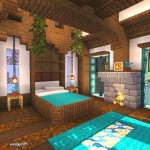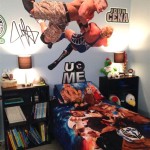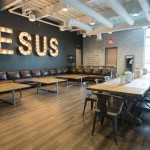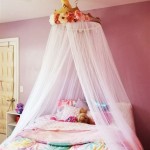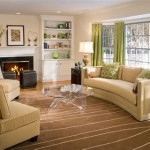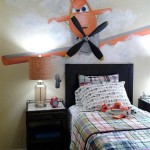How To Decorate a Front Office Desk
The front office desk is the initial point of contact for visitors and clients, making its aesthetic appeal crucial for projecting a positive and professional image. A well-decorated desk contributes to a welcoming atmosphere, reflects the company's brand identity, and can even enhance employee morale. Effective decoration goes beyond mere aesthetics; it considers functionality, organization, and the overall impression conveyed to those who interact with the space. The following guidelines offer a structured approach to decorating a front office desk effectively.
Before embarking on any decorating project, it's essential to understand the overarching objectives. A primary goal is to create a welcoming and approachable environment for visitors. This necessitates avoiding clutter and harsh, unwelcoming elements. Furthermore, the desk's decoration should align with the company's branding. Colors, textures, and decorative items should subtly reinforce the company's image and values. Finally, the functionality of the desk must be preserved. Decorations should not impede the employee's ability to perform their duties efficiently or hinder access to essential tools and equipment.
Prioritize Cleanliness and Organization
A clean and organized desk is foundational to any successful decoration strategy. Clutter creates a negative impression and detracts from any decorative elements. Daily tasks should include removing unnecessary papers, organizing files, and sanitizing surfaces. Invest in organizational tools such as desk organizers, file trays, and cable management solutions to keep essential items accessible yet out of sight. Regular decluttering prevents build-up and ensures the desk consistently presents a professional appearance.
Effective organization also involves a systematic approach to document management. Implement a clear filing system for both physical and digital documents, ensuring that important information is readily accessible. Use labels and color-coding to further enhance efficiency. Digital document management systems can reduce reliance on paper and minimize physical clutter. Moreover, a well-organized workspace promotes a sense of calm and reduces stress, contributing to a more productive and positive work environment.
Consider implementing a "clear desk policy" at the end of each workday. This involves removing all non-essential items from the desk surface, leaving only necessary equipment such as the computer and phone. This practice helps maintain a clean and organized workspace and ensures that the desk presents a professional appearance at the start of each day. Regularly cleaning and disinfecting the desk surface is also crucial for maintaining hygiene and preventing the spread of germs.
Incorporate Greenery and Natural Elements
Introducing plants and natural elements can significantly enhance the ambiance of a front office desk. Plants add a touch of life and freshness, creating a more welcoming and calming environment. Studies have shown that plants can also improve air quality and reduce stress levels, contributing to a healthier and more productive workspace. Select low-maintenance plants that are suitable for indoor environments and require minimal care.
Succulents, snake plants, and ZZ plants are excellent choices for a front office desk due to their resilience and low water requirements. Display plants in attractive pots that complement the overall décor of the office. Consider using natural materials such as wood, stone, or bamboo to further enhance the natural aesthetic. Small terrariums or miniature gardens can also add a unique and visually appealing element to the desk.
Beyond plants, natural elements can be incorporated in other ways. A small bowl of decorative stones or a piece of natural wood can add texture and visual interest. Natural light is also a crucial element. Position the desk to maximize exposure to natural light, if possible. If natural light is limited, consider using full-spectrum light bulbs to simulate natural daylight. The incorporation of natural elements helps create a more inviting and harmonious atmosphere in the front office.
Select Thoughtful and Brand-Aligned Decor
Choose decorative items that are both aesthetically pleasing and aligned with the company's brand identity. Avoid generic, mass-produced items that lack personality or fail to reflect the company's values. Instead, opt for unique and thoughtful pieces that communicate the company's mission and culture. Consider incorporating artwork, sculptures, or other decorative objects that complement the overall décor of the office.
Branding elements can be subtly integrated into the desk decoration. A small display of company merchandise, such as a branded pen holder or a promotional item, can subtly reinforce the company's brand identity. Ensure that these items are tastefully displayed and do not clutter the desk. Consider using the company's colors and logo in the desk décor, but avoid overwhelming the space with branding elements. Subtlety and sophistication are key to effectively integrating branding into the desk decoration.
Personalization can also play a role in creating a welcoming and engaging environment. Allow the employee to add a few personal touches to the desk, such as a framed photograph or a small memento. However, ensure that these personal items are professional and appropriate for the workplace. The goal is to create a space that feels both welcoming and professional, reflecting the company's brand while also allowing for individual expression.
Optimize Lighting and Ergonomics
Effective lighting is crucial for both functionality and aesthetics. Ensure that the desk is adequately illuminated to prevent eye strain and improve visibility. Use a combination of ambient and task lighting to create a comfortable and well-lit workspace. A desk lamp with adjustable brightness and positioning can provide focused illumination for specific tasks. Consider using energy-efficient LED bulbs to reduce energy consumption and minimize glare.
Ergonomics should also be a primary consideration when decorating a front office desk. The desk should be set up to promote good posture and minimize the risk of repetitive strain injuries. Ensure that the monitor is positioned at eye level and that the keyboard and mouse are within easy reach. Use an ergonomic chair that provides adequate support for the back and neck. Consider using a standing desk converter to alternate between sitting and standing throughout the day.
Cable management is another important aspect of ergonomics and aesthetics. Keep cables organized and out of sight to prevent tripping hazards and maintain a clean and uncluttered workspace. Use cable ties, sleeves, or organizers to bundle cables together and keep them neatly arranged. Route cables behind the desk or through grommets to minimize their visibility. A well-organized and ergonomic workspace promotes comfort, productivity, and overall well-being.
Maintain a Consistent Theme
Establishing a consistent theme throughout the front office is pivotal in creating a cohesive and professional aesthetic. This theme should be an extension of the overall company branding and architectural style, ensuring visual harmony and reinforcing the company's identity. The theme should encompass colors, textures, and decorative elements, creating a unified look that resonates with visitors and employees alike.
Color palettes should be carefully selected to reflect the company's brand identity and the desired atmosphere. Neutral tones, such as grays, beiges, and whites, provide a versatile backdrop that can be complemented with pops of color. These accent colors should be derived from the company's branding guidelines, ensuring consistency across all visual elements. Consider the psychological impact of colors; for instance, blues and greens can create a calming environment, while oranges and yellows can evoke energy and creativity.
Textures play a significant role in adding depth and visual interest to the décor. Incorporate a variety of textures, such as wood, metal, glass, and fabric, to create a tactile and engaging environment. These textures should complement the overall theme and color palette. For example, a modern office might incorporate sleek metal and glass surfaces, while a more traditional office could feature warm wood tones and textured fabrics. Maintaining consistency across these elements ensures that the desk decoration aligns with the broader office aesthetic.

Front Desk With Snow Flakes And Garland Office Decorations Holiday Decor

Design Tips For Your Reception Area Crystal Tpl

6 Curved Reception Desk Ideas Madison Liquidators

Reception Desks Contemporary And Modern Office Furniture Chair

11 Unique Reception Desk Design Ideas To Attract New Clients

Stylish Front Desk Inspiration For Your Space

Design Tips For Your Reception Area Crystal Tpl

Reception Desk Modern Design Office Furniture In Dubai Mr Furnitur 2025 Interior Table

How To Design A Welcoming Office Reception Area Be Furniture

Salon Reception Desk Interior Design Spa Room Decor
